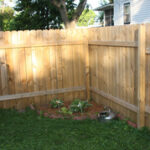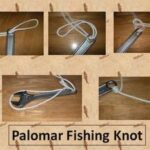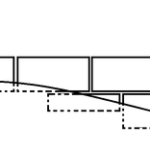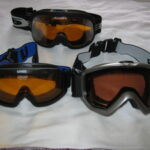Kickback is a word no woodworker wants to hear- particularly in his or her own shop. It is an ever-present danger when using a tablesaw. However, it is, for the most part, preventable.
I encountered kickback with my first tablesaw. I was already nervous- I had never used one before. Goggles on, hearing protection on, all safety precautions followed, I began cutting salvaged wood for a new fence. Everything was working beautifully. Then, in an instant- a nightmare. One board had a hidden knot in it. With a sickening bang, sparks and more, the board jumped out of my hands, shot up into the air breaking the guard and scaring me half to death.
I turned the saw off, unplugged it, and didn’t go near it for three days. That was my first kickback. I have never forgotten it. I found bits of wood in my hair and a small bruise where a piece of wood struck my forehead. It could have been far worse.
I checked the saw, blade, and wood for any damage that would dictate repair or replacement. Following the guide, I performed the troubleshooting that told me it was still ok. With a new blade attached and a cracked guide, I finished the fence.
After researching books and asking fellow woodworkers, there are times hidden knots do cause kickback. They are rare. Okay, I found one.
The following safety tips are for all power saws and chain saws.
Here are 20 safety tips to help prevent tablesaw kickback:
1. Always use the blade guard when cutting wood with the tablesaw. Taking it off is something done for woodworking videos and television shows. It’s like driving a car on the highway without brakes.
2. Before cutting, mark knotholes and remove all metal from salvaged wood. Nails and tablesaw blades never mix.
3. Never operate the saw while distracted, after drinking or taking medication. That’s just asking for a tragedy.
4. Always use the guide to keep wood moving through the blade. Never try to control wood freehand.
5. Never stand directly behind the wood. Instead, stand slightly off to the side. If anything happens, the board has a better chance of missing your head.
6. Always use the right throat plate and a true blade. A warped blade will strike the throat plate and pull your hand into it or send metal into your face and eyes. A warped throat plate is a missile looking for somewhere to land.
7. Never pull the wood through the blade from behind. Always gently guide the wood through from the front.
8. Never try to clear jammed wood while the saw is on. Turn it off first and unplug it.
9. Never try to work on a blade with the saw plugged in. If the switch is faulty or accidentally bumped, your fingers and hands will pay the price.
10. Never remove the splitter blade. It’s there to help prevent kickback.
11. Never, ever, ever try to back wood out of a cut then push it forward again. That’s just asking for kickback.
12. Always use a push stick and feather board for small pieces of work, or when hands might be close to the blade. It’s far easier to get or make new push sticks or feather boards than new fingers.
13. Always read and follow the safety precautions with your power tools. Wear all appropriate safety gear. To prevent entanglement, make sure you don’t wear loose clothing or jewelry when operating the tool.
14. Always make certain that the blade is square to the table. If it isn’t, kickback is inevitable.
15. Before cutting, make certain the blade height is just above the height of the wood. If the blade is too high- for example, having the blade two inches high for cutting a 3/8 inch piece of wood, you’re asking for kickback.
16. Never remove the splitter or the anti-kickback device from the saw. The wood will bind, meaning it will act like a vise on the wood and kick the blade, wood and saw into you.
17. Make sure the area you are working in is free from debris around your feet and legs. Make sure the floor is not a slippery surface. Falling or tripping while operating this is just far too dangerous.
18. Never allow children to use the tablesaw unattended. Never allow them to play with or around the saw, even when it is off.
19. Always use the miter gauge or a sled when making a crosscut. Never try to handle the wood without a guide.
20. After each cut, turn the saw off. Never leave it running when picking up a new board. Too many injuries have occurred when someone turned, lost their balance, and fell onto or into a spinning blade.
It seems like many rules to follow, but they are there to keep woodworkers safe. Anyone can become complacent when handling tools. Prevention is the key.





